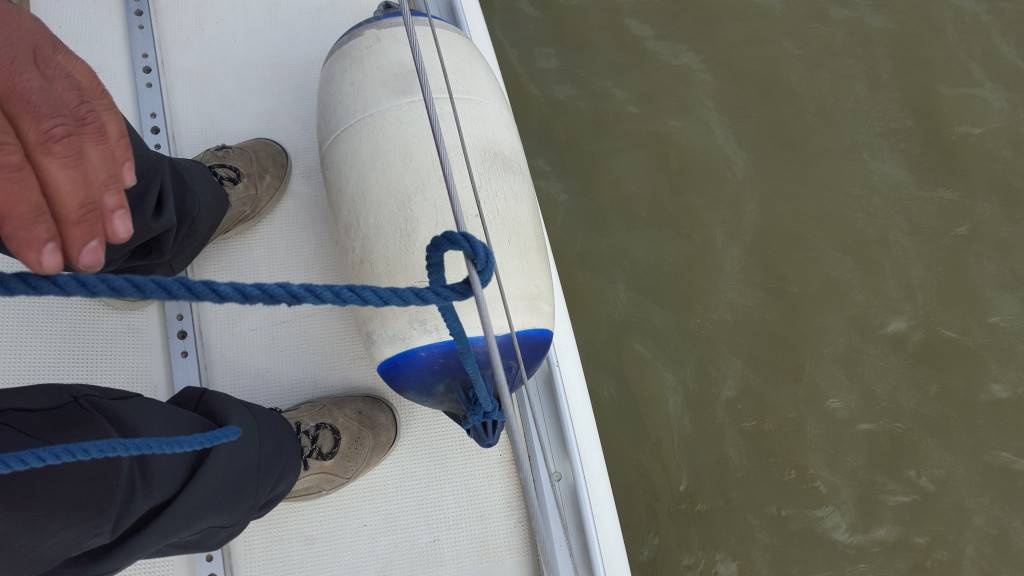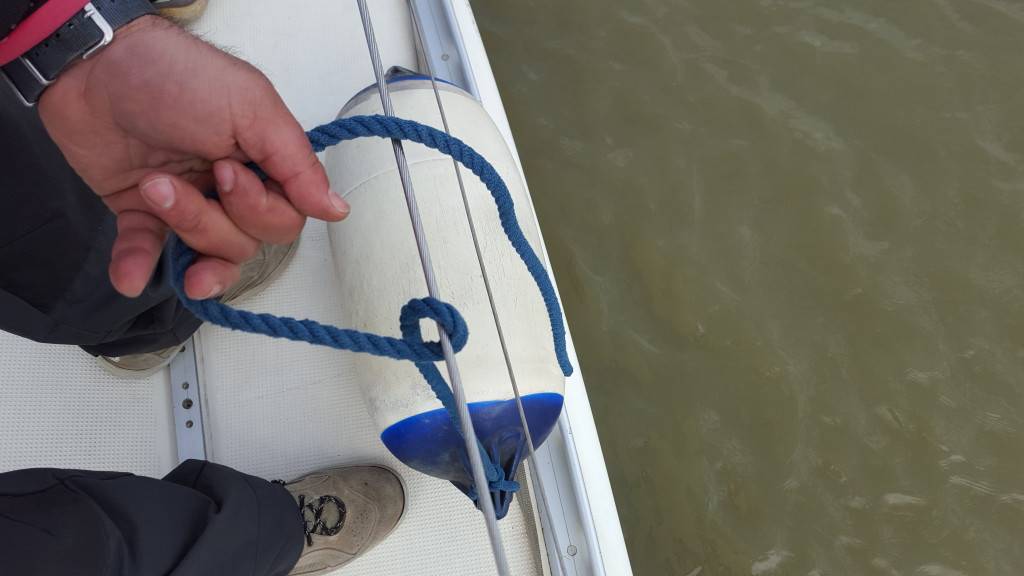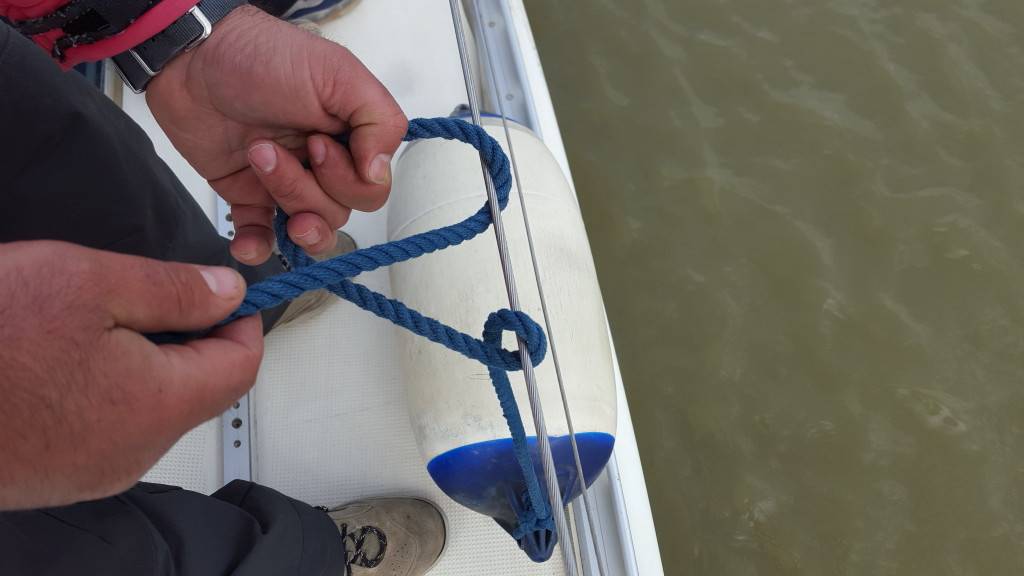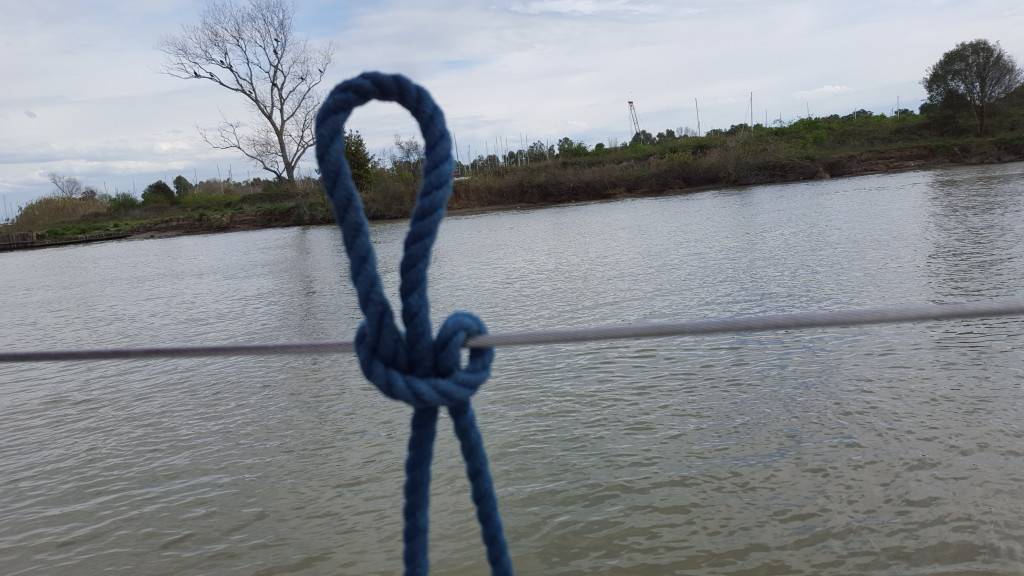Useful, simple, it can be tied in a few seconds, and more importantly, even with the rope under tension. It’s the hallmark of the clove hitch, primarily used to secure or hoist any kind of object on board, from fenders to rope coils.
Quite simple, yet evidently not always executed perfectly given the large number of fenders seen adrift.
In the following pictures, we see the most common execution of the knot, which is when we need to secure a fender. Starting with a caution: once the correct measurement is taken, it’s better to have the fender resting on deck when tying the knot. The possibility of it slipping out of hand and dangling overboard is not so remote.
Therefore, with the fender secured, pass the foll over the lifeline, then bring it back underneath and inside.
At this point, the foll passes behind the fall and again over the lifeline.
After passing over the lifeline, the foll returns passing between the lifeline and the fall.
The knot is now made. With both hands, tighten it, leaving plenty of loose line outside the knot. Finally, it can be closed with an additional loop so that there are fewer chances of it coming untied.
The name seems to come from the Latin word ‘par,’ meaning double. And indeed, it is executed by making two parallel loops, effectively doubling the first loop.
There is also a version of the hitched clove hitch, which is achieved in the final phase by passing the foll through the second loop twice. But be cautious, as it is not safe. It can only be used temporarily. The goal is to be able to quickly untie it by pulling the foll. However, it can only be used to temporarily secure a flying fender or a awning.




























